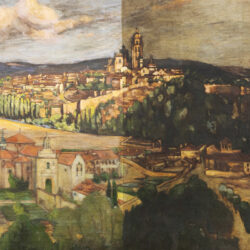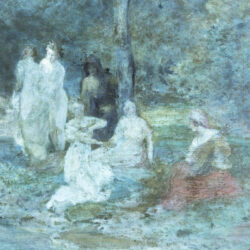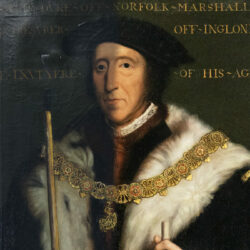This case of mistaken identity is down to oil paintings actually being prints – more commonly known as oleographs. Sometimes, this can cause problems for art collectors – especially when they enquire into restoration or valuing their collection. Have a read below to find out what an oleograph is, why it’s important to know, and how to tell if you have an oleograph or an oil painting.
What is an oleograph?
Oleographs are prints designed to resemble oil paintings in style, with close similarities to the artistic techniques of oil paintings. Oleography was widely used in the late 19th century, and involved the process of chromolithography, using a range of between 15-20 colours.
A stamping process is used to imitate a canvas surface and the thick strokes of oil paint. The print is then attached to canvas to create the close look of an oil painting.
Oleographs can very convincingly resemble oil paintings – in an attempt to portray an extra layer of authenticity, creators of oleographs would sometimes add a yellow hue to the artwork to look like the painting was varnished and had aged. It can therefore sometimes be difficult to tell whether the artwork you have is an oil painting or an oleograph.
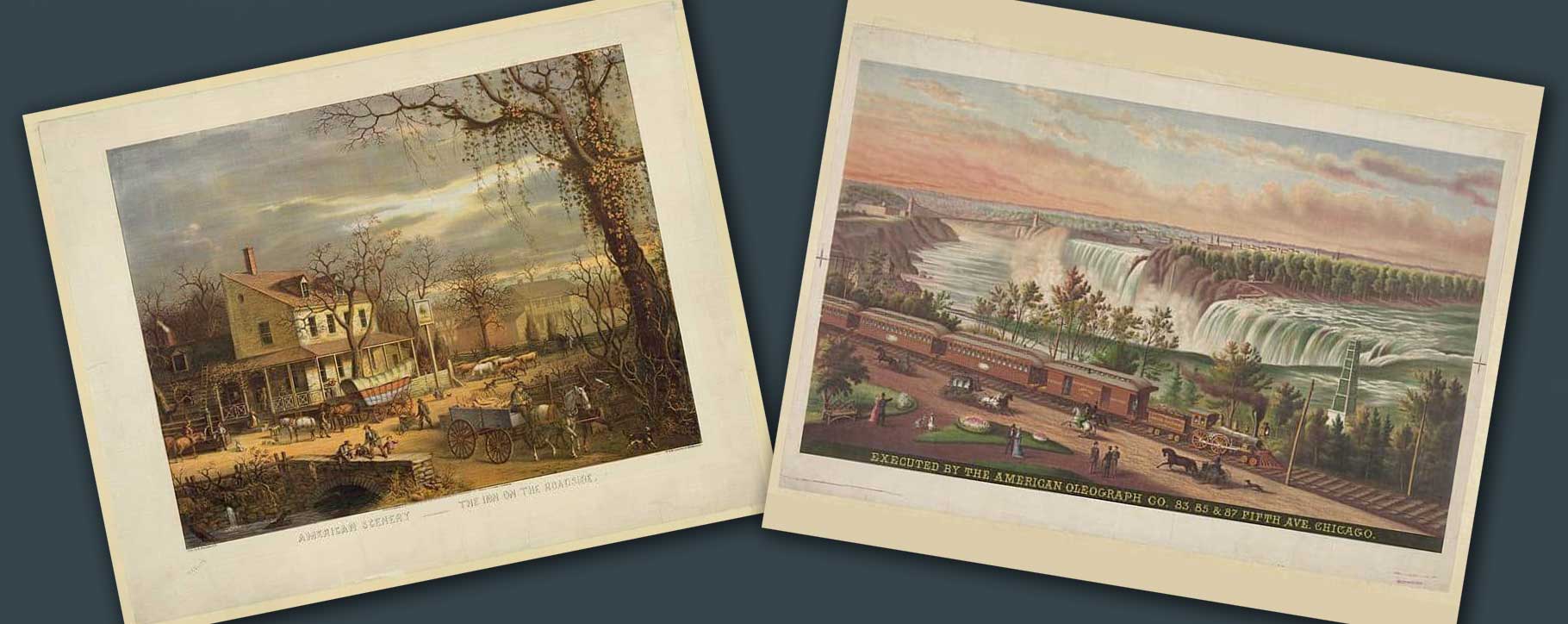
Why is it important to know the difference?
From a restoration perspective, unfortunately there is very little that can be done for oleographs. With such prints, it is not possible to make any sort of difference to the intended style. It is not, for example, like an oil painting where removing surface dirt and the varnish will cause the true colours of the painting to be revealed underneath.
If you are interested in knowing the value of your art collection also, unfortunately oleographs will not yield any successful results. They are imitations of paintings, rather than being actual artworks of any artistic and financial merit.
How can you tell the difference?
It can be a tricky process to tell the difference between an oleograph and an oil painting, as the prints can be very convincing. It is also not helped by oleographs being attached to the canvas, so for all purposes it looks to be an oil painting.
We’ve put together some handy signs to look out for on your artwork.
- Look closely at the surface of the artwork. As prints, oleographs have no texture, and so if it looks as though the artwork has raised brush strokes, and perhaps areas of impasto, that’s a good sign that you have an oil painting. A print would not be able to replicate any dimensionality to a painting. The below photo shows an oil painting with impasto (raised paint layer). If this is present it’s a good indication of an oil painting.
- Look out for losses or flaking paint. The above photograph also shows where paint has lifted and been lost from a canvas. This is one of the quickest ways to tell if you have an oil painting, as oleographs do not have a paint layer.
- Look along the edges of the painting. If a print has been stuck down onto the canvas, it will be most evident along the edges. The print may be peeling back, or there will be a clear line where it does not extend to the stretcher bars.
- Look for any reproduction ‘dots’. Sometimes when prints are created, there are visible marks on the artworks of the printing process, such as the dots on the oleograph below. Oil paintings do not have such markings as they have been created on canvas, rather than having been systematically printed.

- Look for any signs of past restoration – particularly on the reverse. If there are patches on the back of the canvas this may be from past tear repairs and would indicate it’s an oil painting. Look also for any conservation studio stamps on the stretcher bars or the back of the canvas. As conservators are unable to restore oleographs, if it has spent time in a studio, it would suggest it has undergone a previous campaign of restoration.
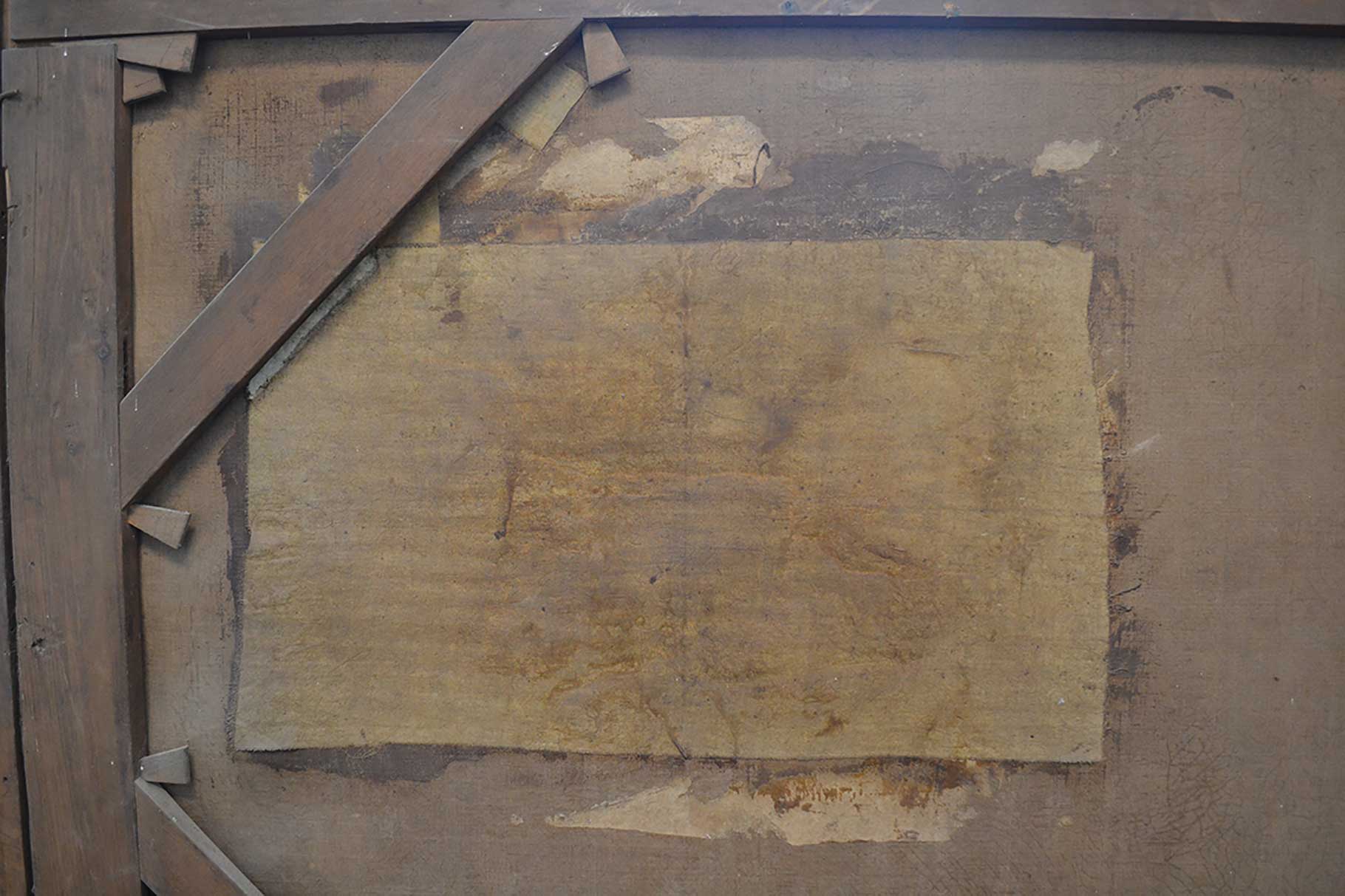
- Look for any signs of provenance. If there are auction houses or gallery stamps on the reverse of the painting, this would indicate that it may have been professionally appraised and therefore marked as an oil painting.
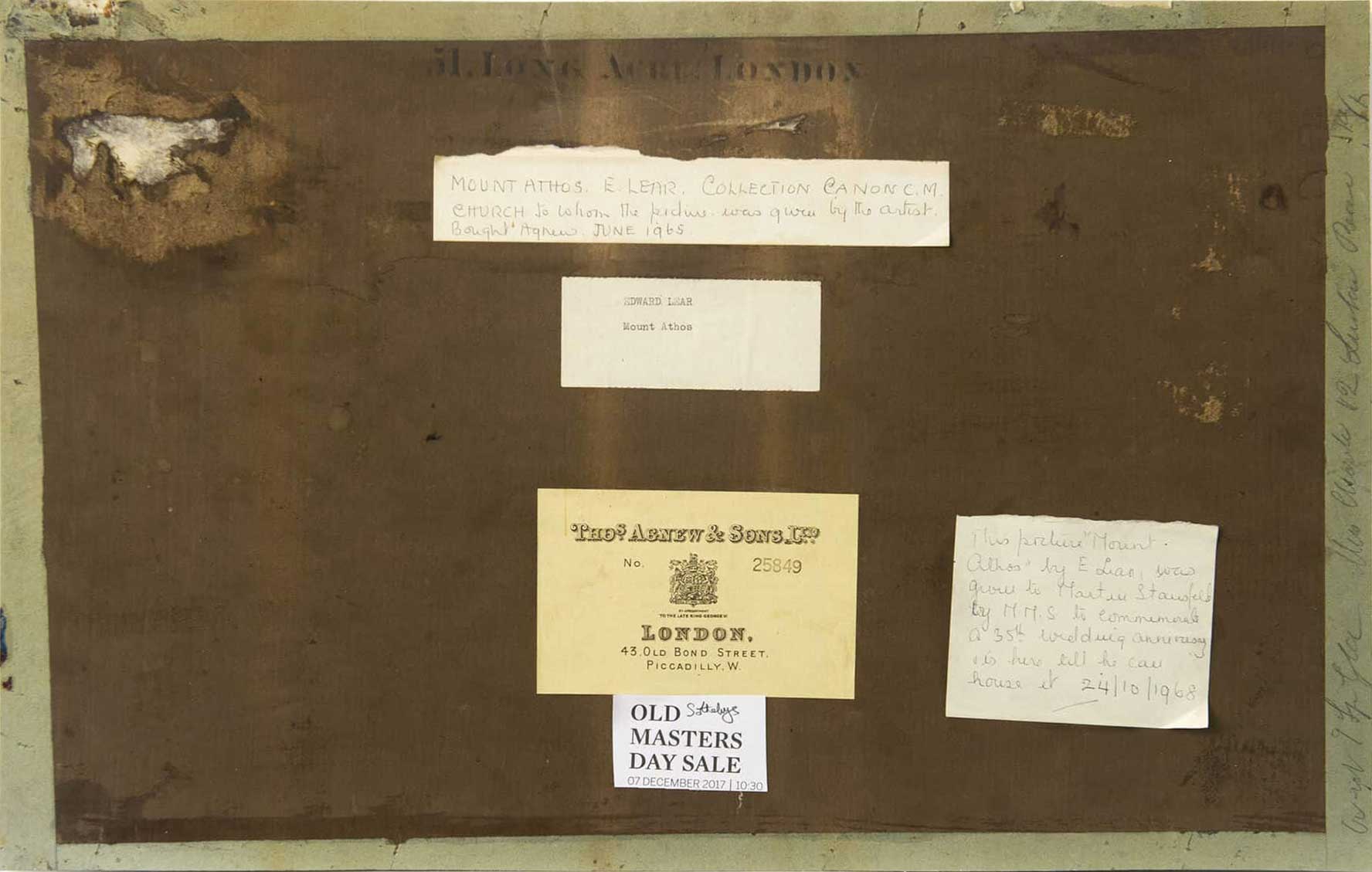
- Get it professionally assessed. If you are still unsure whether you have an oil painting or oleograph, you can always get in touch with a conservator and send photographs initially. The conservator can take a look for you and provide advice. Alternatively, it can also be collected for assessment where cleaning and varnish removal tests would also be carried out to see if it makes a difference.
If you are unsure whether your artwork is an oil painting or an oleograph, you are very welcome to contact us with photographs and we can offer our obligation-free advice.


